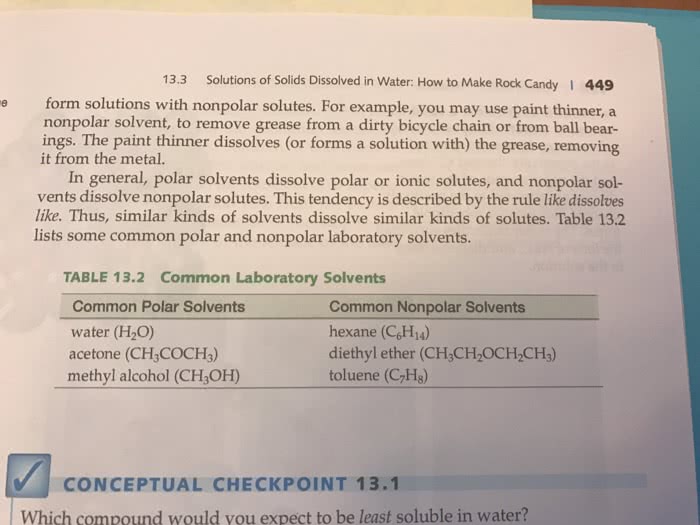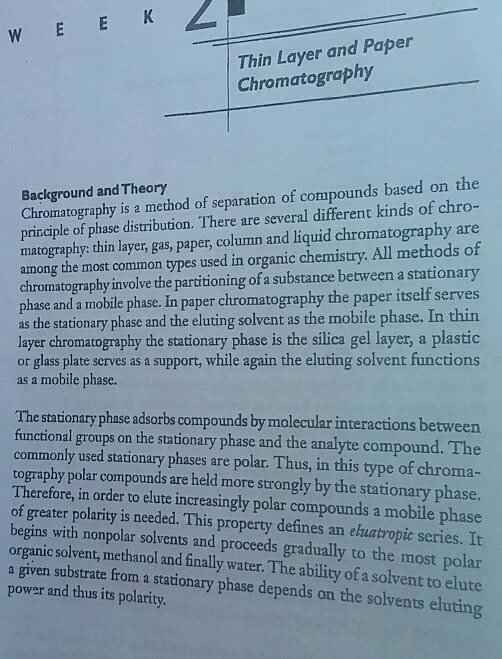CHEM 1035 Chapter : Weeks 5.pdf
Document Summary
Chapter 4 three major classes of chemical. When sugar is dissolved in water to form a solution, we refer to water as the solvent and sugar as the solute. We often categorize solvents as being polar or non-polar. Solutes can also be classified as molecular (no ions formed) or ionic. Molecular solutes can range from non-polar to highly polar. Water, a very polar substance, is the most common solvent, but there are many relatively common non-polar solvents, such as hexane, C6h14, a substance similar in structure to those which are found in gasoline. Whenever we speak of liquid solutions, water is the solvent unless otherwise noted. Although the water molecule is neutral in charge and contains no ions, there are regions of positive and negative character within the water molecule. These regions of positive and negative character are due to the high electronegativity (attraction for electrons) of the oxygen atom and the low electronegativity of the hydrogen atoms.




